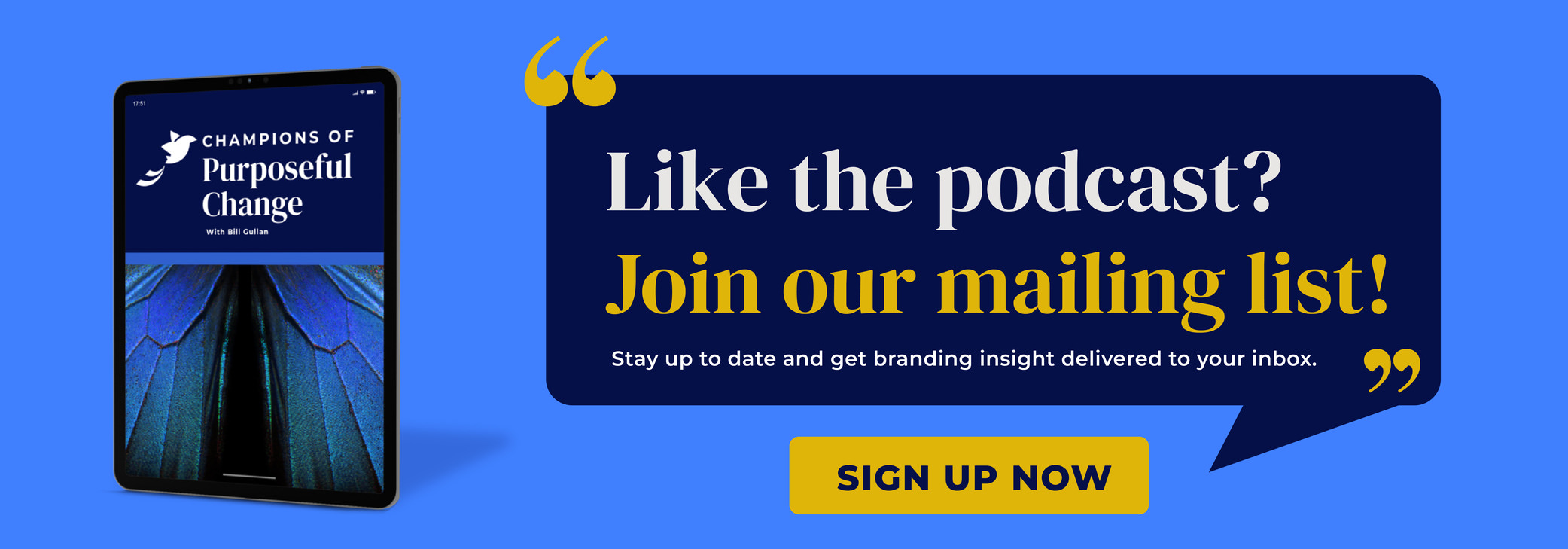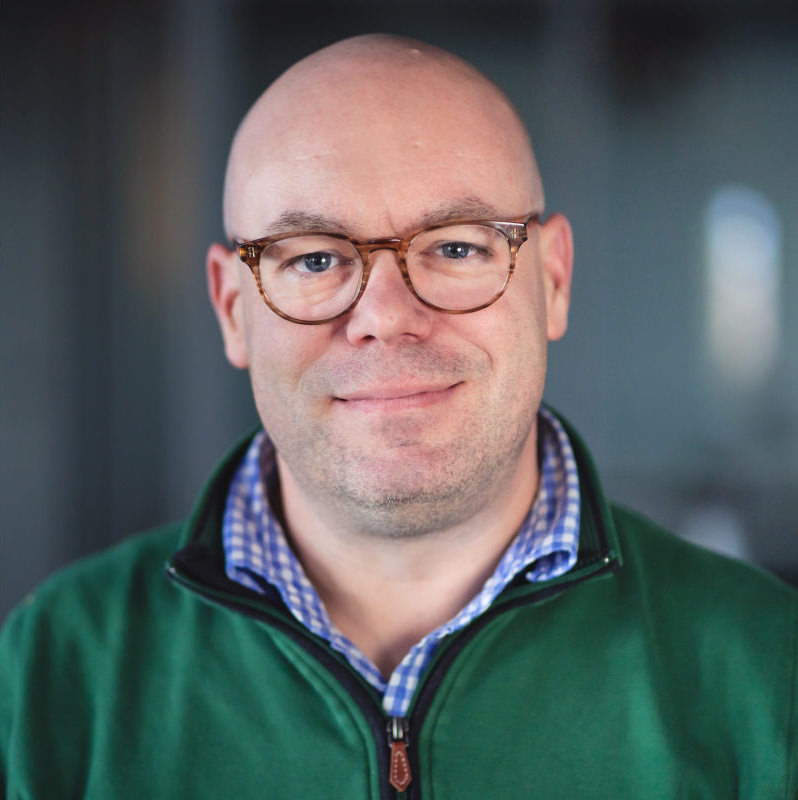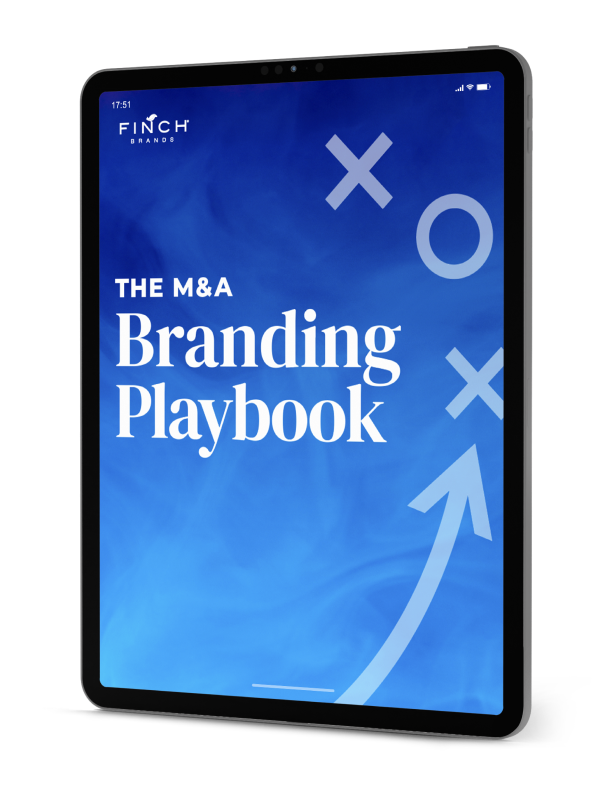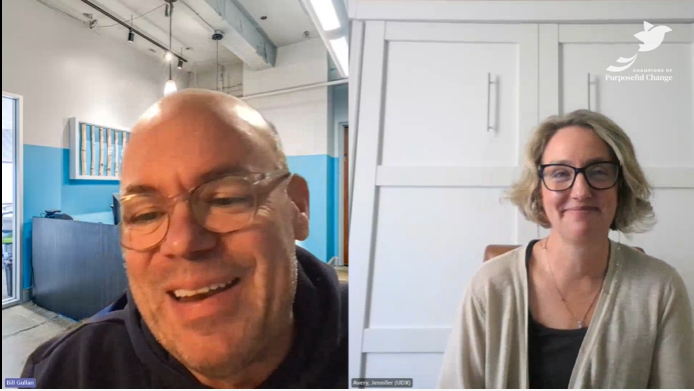Growth Through Innovation – Mary Pochobradsky, VP Product & Innovation – Nutrisystem
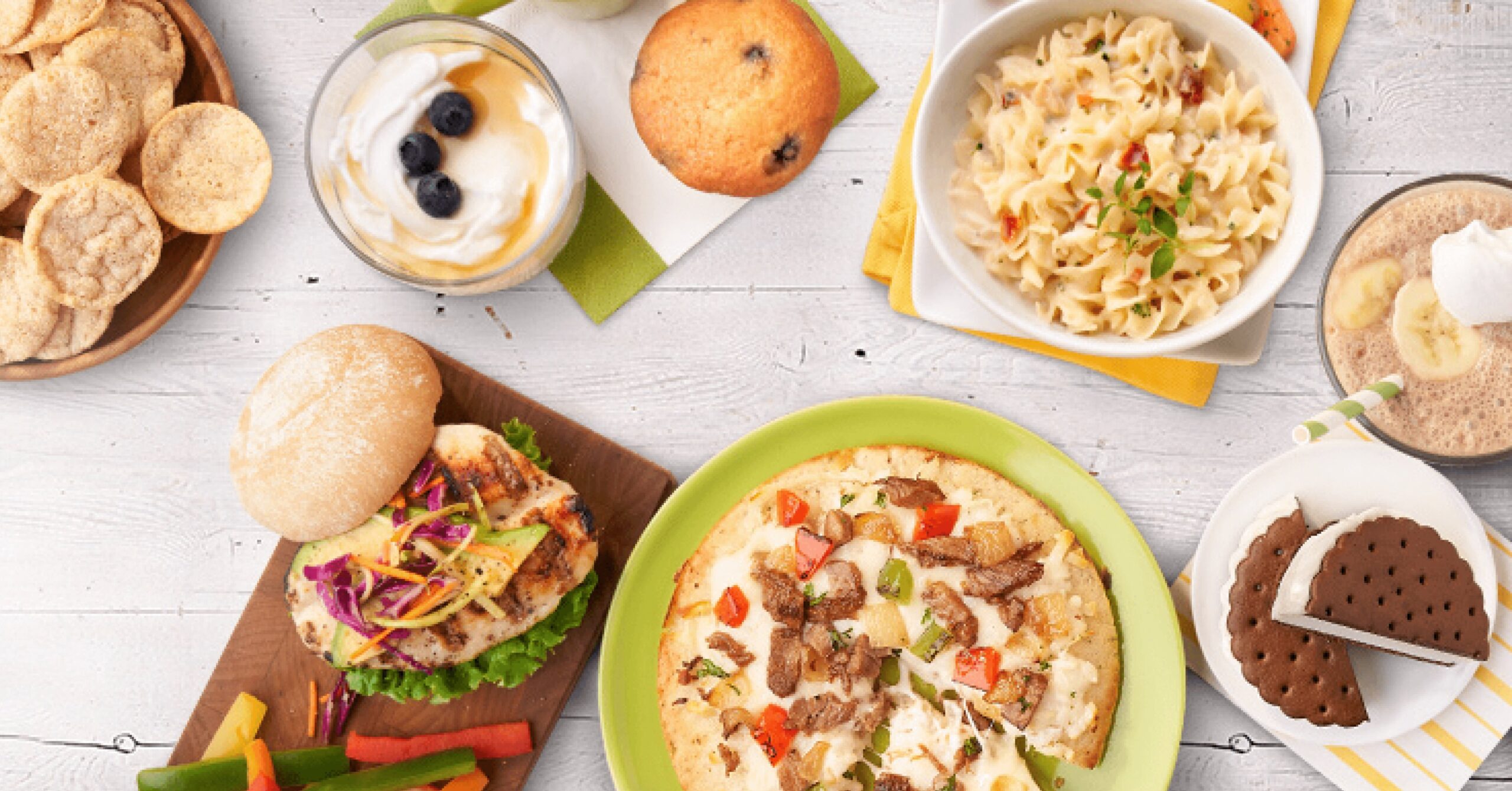
Today we welcome Mary Pochobradsky, VP of Product & Innovation at Nutrisystem. Mary takes us through her career journey – from competitive skiing to marketing and innovation roles at Procter & Gamble, Hershey, and now Nutrisystem. We discuss how Nutrisystem creates growth opportunities by getting to know its customer on a deep level – supporting positive momentum amid ever-shifting nutritional trends and uncertainties like COVID-19. If you like our podcast, please subscribe!
Podcast: Download Subscribe: iTunes | RSS
Transcription:
Bill Gullan:
Greetings one and all. This is Real-World Branding. I’m Bill Gullan, President of Finch Brands, a premier boutique brand consultancy. We’re happy that you’re with us. Hope everybody had a nice Thanksgiving. I’m sure it’s different for many of you this year, but hopefully safe and warm nonetheless.
And thank you for joining us. We realize that we’ve been a little bit lax in terms of frequency of episodes here, but we are planning through this sprint to the holidays and then into the first quarter of next year to pick back up our biweekly cadence. We have some great guests lined up, including Mary Pochobradsky who joined us today, who’s the VP of Product and Innovation at Nutrisystem. She’s amazing. And her journey from a competitive skier during her undergrad days at McGill, through to falling in love with marketing through a several decade career at Proctor & Gamble, which in many ways is sort of the pioneer and most respected sort of brand management institution. Then, an amazing and interesting stint at Hershey, a really iconic company with iconic brands, and now into her role at Nutrisystem, which is also a fascinating company, who’s been through many twists and turns. And so you’ll enjoy hearing for Mary Pochobradsky
We’re so grateful to be joined by Mary Pochobradsky, who’s the Vice-President of Product and Innovation at Nutrisystem. Mary, I must confess, this is not my day job. We’ve had a tremendous 30 minute conversation that our listeners would love, but I failed to record. And so thank you so much for being a great sport and for joining us today at Real-world Branding.
Mary Pochobradsky:
Yeah, no problem. And hopefully we’re not leaving anything on the cutting room floor.
Bill:
No, absolutely not. Anyway, we’re so glad to have you here. The career that you’ve had, the places you’ve been, Procter & Gamble, Hershey, et cetera, Nutrisystem now, what a fascinating journey. Could we start there? Could you take us through again, a little bit of the twists and turns that have sort of led you along your career path from competitive skiing to your undergrad at McGill all the way through the journey that you’ve taken?
Mary:
Yeah, no problem. So I think, first and foremost, I’m a Canadian. I grew up in Ottawa, Canada. And as you mentioned in my former life, I was a competitive skier.
Bill:
Wow.
Mary:
I went to McGill University in Montreal, classic university where I did my undergrad and later did an MBA. And then went straight from my MBA to Procter & Gamble, Procter and Gamble Canada originally, and then eventually moved to the US. I had the fortune of working more than 20 years with Proctor & Gamble and worked across five different categories and big iconic brands like Crest and Downey and Bounce and Charmin and Bounty and had the pleasure of an opportunity to work for Jim Stangle when he was Global Marketing Officer, which was an amazing experience.
And then after Proctor & Gamble, I went to Hershey, another truly iconic business and amazingly purpose-driven company, working on their portfolio of brands. And then most recently came to Nutrisystem. I really wanted to get into the direct-to-consumer business and into a smaller agile entrepreneurial organization. And I just saw a great, amazing brand with a really inspiring underlying purpose in terms of how the brand transforms people’s lives. So that’s really in a nutshell kind of what the journey has been.
Bill:
Yeah, absolutely. And what a nutshell it is. Let’s go layer by layer quickly, if nutshells in fact have layers. How did you get from undergrad and sort of being an athlete, what was it about and at what point did marketing seem like the kind of direction that you wanted to take? Was it trial and error, or was there something along the way that awakened you to this? How did that work?
Mary:
Yeah, so I was a competitive skier all the way through my undergrad and after leaving my undergrad, I actually worked in sports marketing. So I sort of translated my athletic experience into my first work experience. And that was really around event marketing. And through that experience, I realized how much I enjoyed marketing and also that I wanted to be a business person. And so that really led me to my MBA. And at McGill, I really got a passion for strategy, business strategy. And so that combination of this real kind of interest in marketing and brands in general, and then that strategy inspiration really led me to P&G. And then I was very fortunate to work at such a storied company that really was such a great fit with my passions.
Bill:
Yeah, and so two decades of P&G, our industry looks to Proctor & Gamble as a pioneer in so many different ways as it relates to sort of a house of brands, brand architecture, many of the core sort of positioning frameworks, and other things that have become part and parcel of how brand strategy works have been incubated at P&G. And again, when you’re in the middle of it, you may not see it, but could you talk about what it was like to spend a couple of decades in a place that is so deeply known as being leaders in the history of consumer packaged goods and of branding?
Mary:
Yeah, so P&G is really an amazing company. The marketing function or the brand function at marketing is really kind of the center hub of what happens at the company. So you’re not only responsible for general management of leading and managing P&L, driving innovation, but also brand positioning and everything that it takes to sharpen strategy, business strategy, and marketing strategy. And then just working with an incredible suite of talented people. We always say, sort of an old adage, standing on the shoulders of giants, but the track record and the history of people who have nurtured those brands and what they give you when you take over a brand and what you were charged with building as part of your career is really an amazing experience.
Bill:
Yeah, no doubt. It looks like along the way, you’re right, brand management certainly has a role in innovation historically, but along the way, during your P&G time, it seems like your roles began to move even further in the direction of innovation. And could you speak to sort of what was awakened within you and maybe why you fell in love with that particular discipline inside of what it takes to build and grow businesses?
Mary:
Yeah. I think what I learned through leading businesses and building brands was the power and the importance of innovation to drive growth and to strengthen and grow brands. When you’re tapping into amazing consumer insights and really sharp strategy and building on trends in the marketplace to drive growth on brands and innovation is just an incredible engine that drives that.
For example, one of the assignments that I was most proud of was leading the fabric enhancer business through a turnaround, and we really did that through great messaging, great innovation executed across a portfolio of brands. That really turned around the growth, including the launch of Downey Unstoppables, which was a very disruptive new form and has become one of the most important, and I think over a billion dollar brand, at P&G now.
Then on Charmin and Bounty, those brands were some of the biggest and most enduring in the company and a category which you would expect to be quite commoditized, the paper business. But what you have in that business is incredible proprietary technology and superior performance, and really, really strong and stable brands that people love and have a passion for. And so driving innovation that continues to grow and leverage that technology and bring new consumers in and continue to drive that business was amazing as well.
Bill:
Yeah, what an experience or set of experiences. So Hershey was next, the whole town smells like chocolate. It’s this wonderful place. It’s a combination of sort of a destination of a headquarter, I mean, it’s all these different things. Iconic brands and confections obviously have their place, but it’s a more health conscious sort of moment in our society. Could you talk a little bit about the Hershey experience and some of the work you were doing there?
Mary:
Yeah. So Hershey, another amazing company, very purpose-driven, the company that believes to do well is to do good. Our office was on the corner of Chocolate and Cocoa across from Hershey Park, up the street from Hershey Hotel. So a business just with a really deep history and very purpose-driven. And there, I had a chance to work across the portfolio of brands, mostly focused on brand strategy, sharpening brand strategy, and turning it into great communication.
So a couple of examples that I’m particularly proud of on the Reese’s brand, as we were sharpening that brand strategy, this was a brand that had been thriving and growing on people’s extreme passion for the product itself, their craving, and their love of the brand. That strategy work resulted in their campaign, which has now been on air for a couple of years, Not Sorry. And that’s really about provoking people’s desire for the brand and tapping into that craving that they have. So that was a great experience.
On the Hershey business, that strategy work, we really were really leveraging a product truth about chocolate, which is when you eat it, it kind of warms you from the inside out. And then the brand sort of heritage and connecting people and that came campaign is called Heart Warm The World. They’ve been activating that through messaging and activations and innovation across the board and growing that business like crazy. So that was some of the work that was really exciting at Hershey.
Bill:
Sure. I can attest to those campaigns, given that we’re still working through our Halloween inventory here at home and definitely warms the household. One last question about Hershey. We’ve gotten into a habit, my family has, coming every Easter and we stay at the hotel and we go to the park and the kids love it and stuff. Those brands are put to the test in ways beyond, I would imagine, a typical CPG brand might be, in terms of how they are rendered as characters, how they are delivered as part of the sort of park and entertainment side of the business. Did you as sort of a traditional packaged goods marketer have any exposure or thought or responsibility for thinking through the extension of some of the characters and symbols and elements? Or how did Hershey at least organizationally sort of handle or think through how to deliver in all these different ways that may be beyond how food, drug en masse and different categories take and sell brands through?
Mary:
Yeah, I think there’s a whole ecosystem that supports the translation of the business into those arms. So there’s a whole separate company called Hershey Entertainment, but the collaboration between the core Hershey business and Hershey Entertainment to make sure that those brands come to life in their experiential manifestations. Like in Hershey Park, it’s a very, very close collaboration. And we have a whole division also that just licenses our brands to other companies to use our iconic positioning to leverage entirely different categories. We’ve had a long standing partnership with General Mills around Reese’s Puffs, which is a cereal and a very large business for them.
Bill:
Yeah, sure. No, very cool. And the consumer experience there is just tight and meaningful and deep and intentional or that’s how it feels. So Nutrisystem, fascinating company with a really interesting history of twists and turns. And you mentioned the interest in the direct business, which obviously where Nutrisystem began, but obviously your experience pays a lot of dividends on the retail side too. Two years in, what have you experienced at Nutrisystem so far against the backdrop of always changing nutritional trends, the pandemic, ownership changes, and mergers and acquisitions? Give us a little state of the union on how you see the world through Nutrisystem’s lens at this point.
Mary:
Yeah, so I think many of the things I expected have been true with the organization. It’s a very agile and entrepreneurial organization dedicated to and experts in the direct-to-consumer model and very passionate about their consumers and the sort of underlying purpose empowering people to transform their lives through their bodies and their health. And so I think a lot of that has really realized itself in my experience. And also this is a company that has transformed itself many times and adapted many times in terms of its business model.
And as you’re aware in the two years that I have joined or been at Nutrisystem, we were purchased by one company and now … health, and now we’re being sold and purchased by another, Kainos Capital, a private equity firm. And each one of those transitions is a reinvention for the company as well. So I think that really that spirit of reinvention and innovation and entrepreneurialism is really in the culture at Nutrisystem.
Bill:
Definitely. Some of the key points of emphasis with retail launches, with a general focus across the program of personalization, what are some of the sort of hot priorities, both the product or marketing that you and your team are managing to help Nutrisystem continue to reinvent itself into an ever brighter future?
Mary:
I think probably three big focus areas. One is we’re about simple, convenient, and highly effective weight loss delivered to your home. So constantly leveraging our cornerstone strengths. And also looking to, again, evolve and grow the brand through innovation. So things like continually modernizing our food portfolio. Our strategy is favorite foods made healthier. But we’re constantly looking at ways to bring news to that portfolio, excited about some new food we’re bringing to market in January, where we’ve been inspired by new trends around harvest bowls. And we brought familiar flavors, so we’re launching a portfolio of what are called pizza bowls. So just an example of how we try and be true to who we are, but bring news to our food portfolio.
We’re launching a totally new packaging reinvention. So we’ve modernized our packaging to really elevate the brand. And we really think it’s both making the brand feel more modern, but also elevating our food.
One of our big inspirations for our innovation work has been personalization. So really tapping into the insight of one size doesn’t fit all. The nutrition and weight loss category is a very personal experience and consumers expect a personal experience. And by delivering a more personalized experience with our brand, we’re helping people be more engaged, stick with it, and ultimately be more successful with their weight loss journey. So personalization has been a huge source of inspiration.
And then I think just in general, modernizing the brand and broadening the appeal. This is a brand with an incredibly high level of trust, extremely high level of awareness, but we can always do better to bring in and be more relatable to a broader, a little bit younger audience. We’re not going young, but younger. That’s a continuous journey. I like to think about innovation, it’s about messaging, it’s about packaging, it’s about the product, it’s about all aspects of how consumers experience the brand. And so we’re looking for ways to innovate in all aspects of the brand.
Bill:
Right, terrific. The pandemic obviously has had an impact on all of us in a bunch of different ways. And I would imagine Nutrisystem being, at least at its core, about food delivery, a lot of consumer comfort because consumers are at home. How has COVID-19 been experienced from Nutrisystem out to customers? What has that felt like? What has been the impact on the business?
Mary:
Yeah, I think two things have made us incredibly relevant in this time. One is our strength in direct-to-consumer and home delivery and the convenience of home delivery. Then people’s need, frankly, for weight loss solutions right now, simple and structured weight loss. So COVID has given us a tailwind, but people are still mostly coming to us for weight loss and to improve their health. And we were kind of the right brand in the right moment because of our strengths for convenience and home delivery. So we’ve found that our core messages around our food and home delivery and our marketing and our weight loss effectiveness have been the real pillars of strength for the business through this time.
Bill:
Yeah. And for those of us like me for whom COVID-19 is both a virus name, but also a description of my own weight journey during this process, I’m going to have to be giving Nutrisystem a call or a click on the back end of this.
Mary:
Yeah, we have done some really interesting studies that have really proven that a large percentage of consumers who have been stuck at home have gained weight and are really looking more for a solution. So it has truly made us, again, very relevant in the moment.
Bill:
No doubt. Terrific, what a fascinating set of stops along your journey from sort of iconic brands, your word, Proctor&Gamble and Hershey’s, Nutrisystem, iconic in a different way, but also just the sort of a fascinating laboratory of different distribution models and different sort of trends and impacts. Are there any words of wisdom as you reflect, Mary, on your own sort of career path and what you’ve learned along the way, the passions you’ve developed, the contributions you’ve made, the accomplishments that you’ve earned, for the segment of our audience who may be sort of starting out or starting over? Any kind of words of wisdom that inspire you as you think about your career and that others may be able to grab on to?
Mary:
Well, I guess if I look back on my career, I think if you love brands and brand marketing, I think really going to school on the history and heritage of brands and focusing on really sharp, clear, simple brand strategy is kind of a cornerstone of success. I think the other one is really just putting the consumer at the center of everything you do. A.G. Lafley used to say consumer is boss, and we created a whole framework for marketing around consumer as boss marketing, but putting the consumer at the center of everything you do is kind of critical. And then I think being constantly in touch with the numbers and the metrics and what drives the business, understanding your business model and what drives the business inside and out is critical to being successful in whatever you do.
Bill:
Yeah, no doubt. I’m a liberal artsy sort of guy, and I think many of the folks at Finch who are particularly effective and comfortable have this sort of range of experiences and curiosities that help, what are the personal qualities of a marketer today that you think are essential? There’s probably these base level things that are always the same, a real interest and respect for the consumer and all of those things. But when you think about team members or others who may be seeking to kind of cultivate the right characteristics to be effective these days, any insight on what those characteristics might be, or the attributes that you’d encourage people to sort of uncover or burnish within their own selves?
Mary:
Yeah, interesting question. I think, as you said, there’s sort of the foundational things that are kind of critical, putting consumers at the center of everything you do. I do think that marketing is more complex than it’s ever been before. It used to be one message and one broadcast media and it’s just a much more diverse set of skills that you need to bring to the table to really understand the media ecosystem, the data analytics, and to bring all those pieces to bear. So I do think it’s important to stay on top and stay in tune with how marketing is evolving and becoming more exciting and interesting, frankly, as we move forward.
You can’t be an expert on everything though, I think. So I think, building and leveraging your strengths and building teams that compliment your capabilities, that bring knowledge and experience, and then really fostering collaboration that gets the best out of those teams to deliver business results. So I think that’s even more important than ever before because the ecosystem is that much more complex and just demands more of us. And also, the market is moving more quickly than ever before. So you need to be able to adjust and refine what you’re doing on a much higher pace. And so I think a strong and collaborative team that can work and be very agile together is incredibly important.
Bill:
Yeah, no doubt. And what a great place to end it. We’ve really appreciated your time and your insight, and just observing you in a professional setting, the close knit team at Nutrisystem, the degree to which you all are drawing on channel innovations and product innovations and just changes in consumer mindsets and really endeavoring to remain on that pulse and have it drive the business, it’s palpable. And obviously it’s paid off during the pandemic and with other initiatives that are helping drive the company forward. So grateful for your time.
Mary:
Thank you so much, Bill. It’s been a pleasure chatting with you and a pleasure working with you and your team, who’ve been an indispensable partner for us, so really appreciate your partnership and your contribution to helping us do a better job.
Bill:
Thank you. And I’m proud to have actually recorded this conversation the second time around. So thank you so much.
Mary:
You’re welcome. Thanks Bill.
Bill:
Many thanks to Mary. It’s been a real pleasure getting to know her as a leader and as a professional and her experience is incredible. Her insight related to Nutrisystem and its customer and how to harness innovation as a way to grow brands is a tremendous asset. And we’re grateful that she spent some time with us.
Three ways, as always, to support us at Real-World Branding. One way is to rate and review in the app or podcast store of your choice, be it Spotify or Apple or anywhere else. If you rate and review, we are told that the algorithm secretly and mysteriously enables us to be found by others who might enjoy these contents, would appreciate if you do that.
Also click subscribe to make sure you don’t miss a single one. I know that we’ve had a sort of intermittent recording schedule in the late fall here. And again, we aim to be regular in terms of frequency, but by clicking subscribe, you make sure you will not miss a single episode.
And then, let’s keep the dialogue going. That’s the third way. On Twitter perhaps is the easiest, @finchbrands, @billgullan, whatever. Love ideas, love feedback, and we’re just grateful that you spend some time with us, and we’re happy to be back in the saddle here at Real-World Branding. And in that spirit, we will sign off from the Cradle of Liberty.
